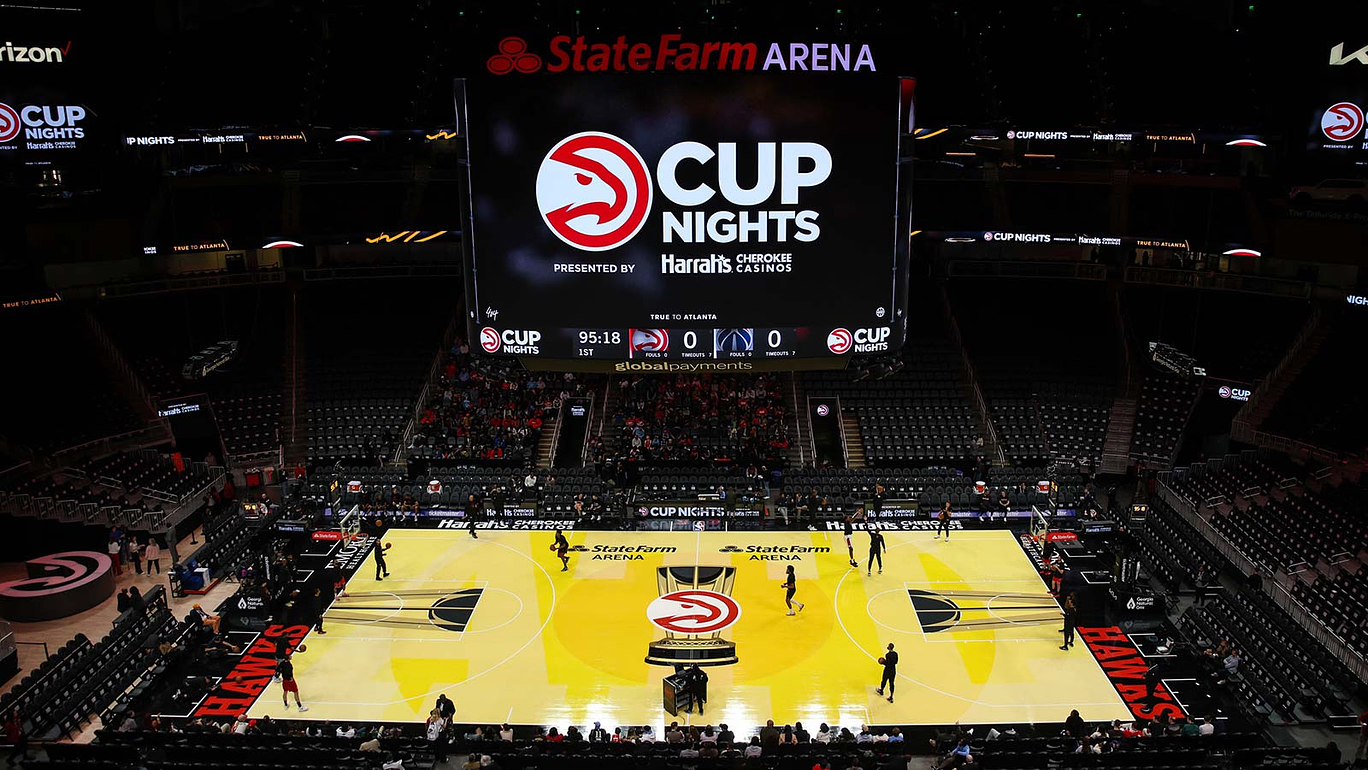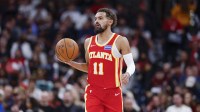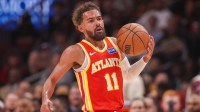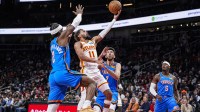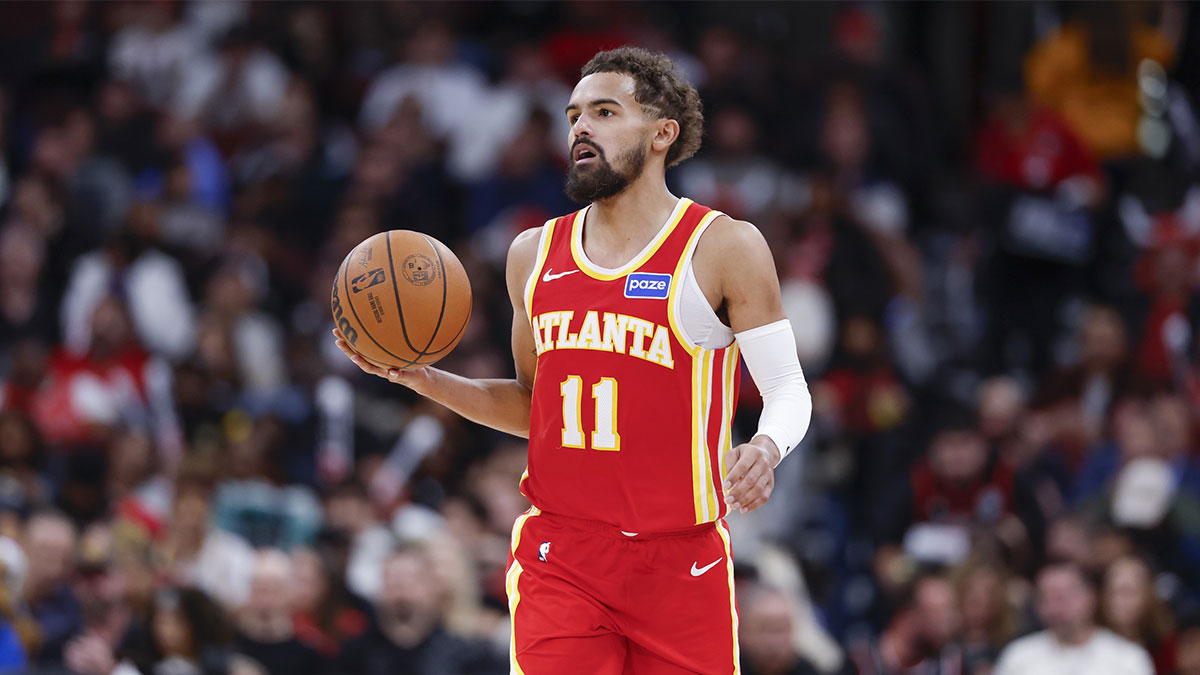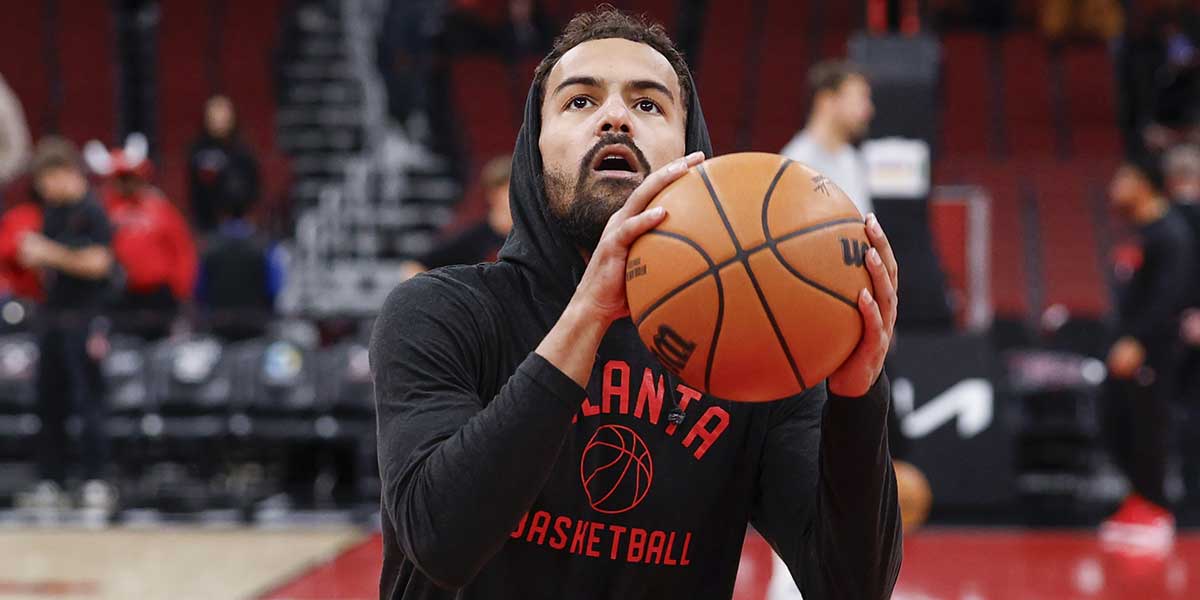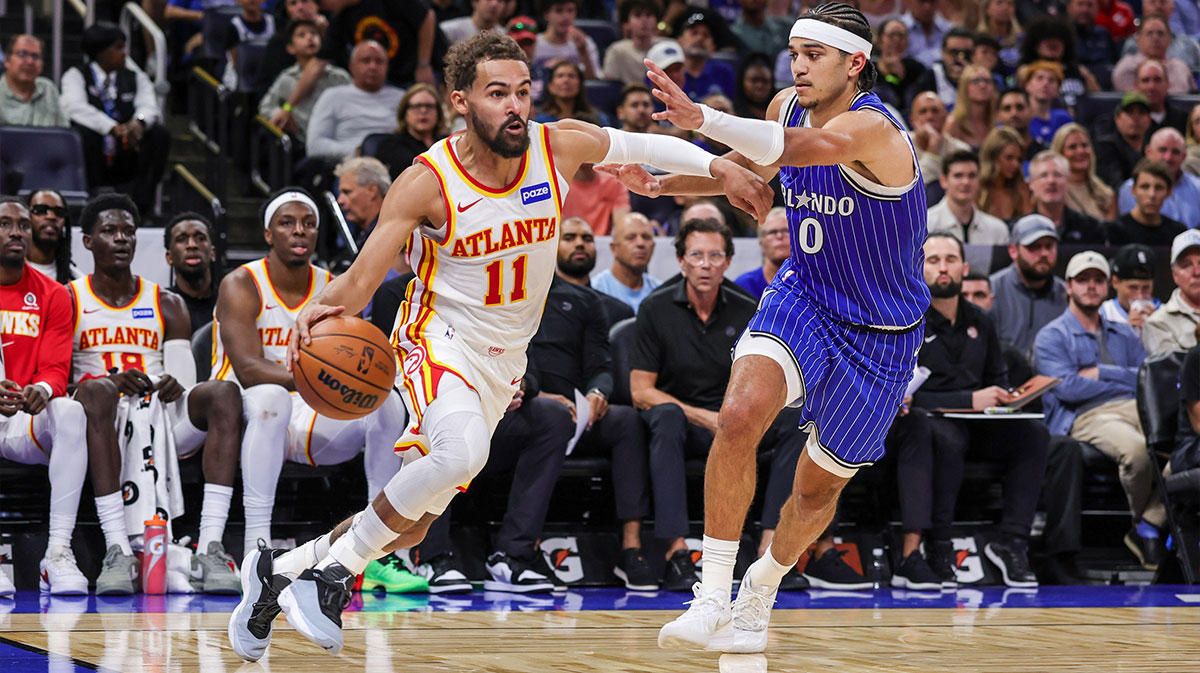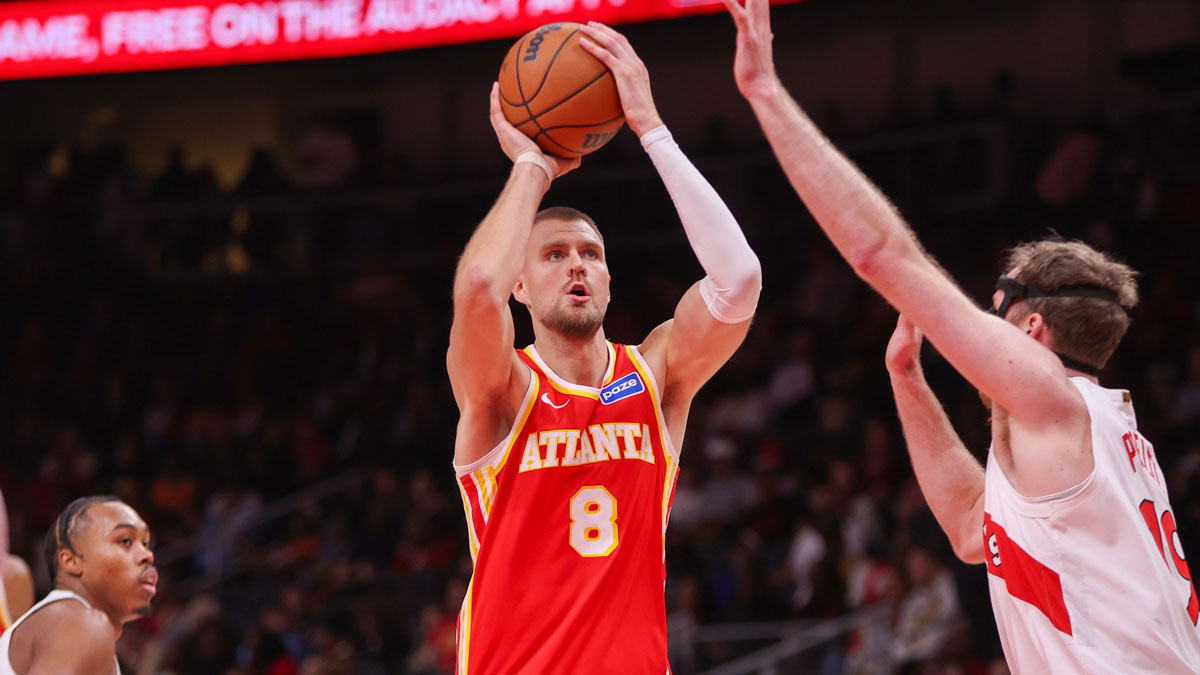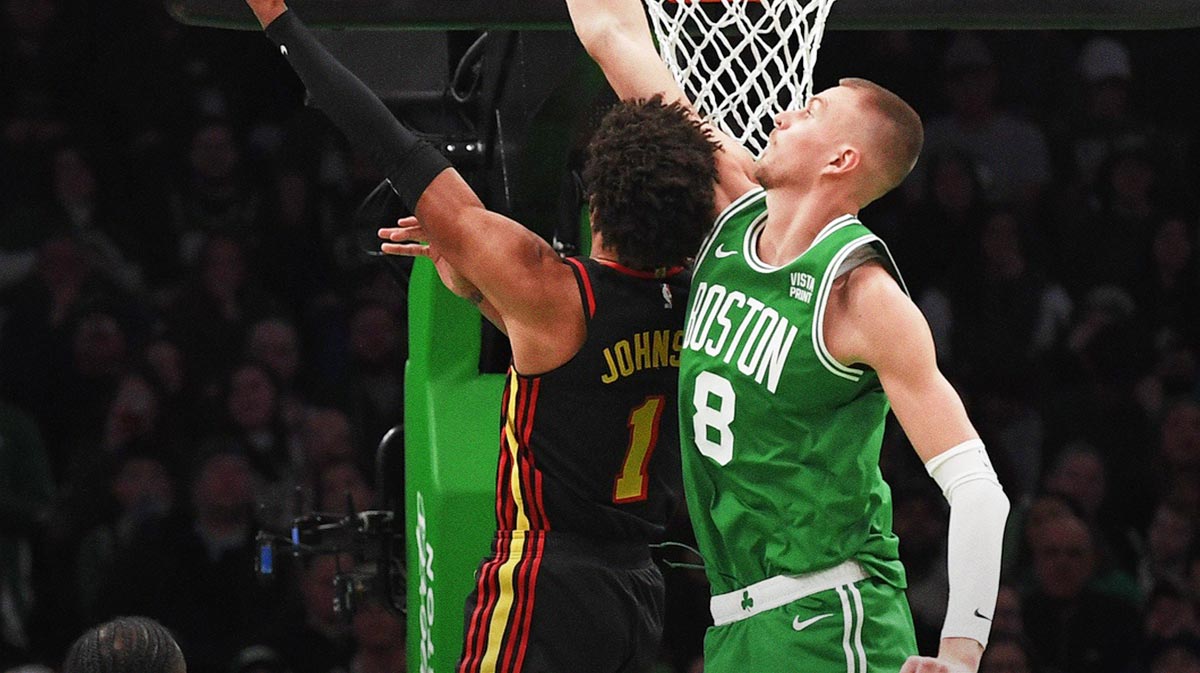There is plenty of room available on the Trae Young bandwagon. The question is whether his slight frame, size, and lack of explosive athleticism is enough to carry said wagon, let alone an entire NBA franchise. The Atlanta Hawks passed on Luka Doncic, the draft's most intriguing prospect, betting he can.
When the Hawks traded back two spots in the draft, picking up an extra first-round pick from the Dallas Mavericks in the process, I fastened my seatbelt firmly on the bandwagon, hoping never to be unfastened.
Trae Young led the nation in both scoring and assists, showcasing a flare for the dramatic and wowed audiences in ways many hadn't seen before at the collegiate level. Still, there are plenty of concerns about Young's ability to translate his game to the NBA. His flaws are glaring. Young lacks the size teams desire, struggling with physicality and wearing down by the end of the season while practically wearing a sign reading “attack me,” on defense.
The question isn't whether Young's defense can improve above passable, but whether his offense is so tantalizing, it's worth dealing with it. The right personnel and organization can mask his limitations enough to capitalize on his promise. The Hawks seem like the right fit.
Atlanta is at the beginning of a rebuild, so they'll presumably have the patience to ride through the bumps Trae Young experiences while adjusting to the rigors of such a physical league. And the roster construction is in such an early stage, Travis Schlenk and the Hawks should be able to custom tailor it to suit his needs perfectly.
Destructive Gravity

Many see Young's deep range, quick release and undersized frame and want to compare him to Stephen Curry, the two-time MVP and perhaps the greatest shooter of all time. The comparisons are in their infancy; Trae Young burst onto the scene this season after being under-recruited and now he's a top-five pick. We need to see how he plays outside of Norman, Oklahoma before we anoint him the next Steph Curry.
Perhaps the biggest attribute we've seen with Curry is his ability to act as a gravitational force when he's moving around freely on the offensive end. Whether in transition or while moving off screens in the half-court, great shooters running around the three-point line have a magnet-like ability to draw defenders towards them. Here's friend and former NBA Video Coordinator Mo Dakhil on Curry's gravitational pull, to illustrate the effect:
Great shooters seem to have this effect when they get out in transition. Young is at his best operating in chaos and the Sooner had the 12th most transition possessions in the NCAA last season, maximizing the amount of time their freshman sensation was in the open floor. But Oklahoma had one giant flaw with their transition attack: they had nobody else to handle the ball and push it up the floor. Young was caught constantly calling for the ball and dribbling it up himself, making up for the lack of ball handling prowess that flanked him. Had it existed, Young could have been so much more lethal in transition.
It's that lack of talent around him at Oklahoma which limits a look into what might be his most potent offensive skill: his gravity. Similar to Curry, the threat of a great shooter like Young zipping around without the ball would maximize the utility of all his teammates on the floor. He's got the same type of importance when roaming without the ball in his hands, demanding the attention of any defender unfortunate enough to see him running up the floor in transition:
Look at how high these pickup points are! Literally every defender that played against the Sooners was scared sh*tless of Young getting even a breath of air within 25 feet and it led to wide open scoring opportunities for his teammates.
Other ways to use Young's gravity

Gravity doesn't just occur when players run off screens or in transition, though. One of the most classic examples of leveraging a great shooter without giving them the ball is in post-up situations or isolations. Post players trying to score one-on-one with their back to the basket is rapidly being phased out of many offensive attacks. The removal of defensive three second calls in the NBA has allowed more teams to trap the post or load-up from help positions on the weak side. One-on-one scorers do most of their damage when they have an entire side of the floor to themselves, while their four teammates (and four defenders) clutter up the weak side. Defenses are so creative and players are so long and athletic, this style of play doesn't lead to high-quality shots frequently. Having four offensive players on one side of the lane simply doesn't cut it.
Young provides value while standing as the only player on the ball-side wing in post-up situations. Now, only three players are on the weak-side, giving much better spacing and opening more avenues for passes to penalize those defenses that try to chip down on the isolations. Young stands in an important position, as defenders on the strong-side wing during a post-up are classically trained to dig down on the post, or swipe at the ball and force a kick-out pass whenever the offensive player puts it on the floor.
Young faced double-teams, hard-hedges on ball screens, traps at half-court and numerous gimmicks during his freshman campaign. Perhaps no larger sign of respect is how tight defenders played him during post-up situations when Young was the entry passer and remained on the strong side. Teams felt much more comfortable sacrificing the two points and playing four-on-four inside the arc, bear-hugging a shooter that stood nearly 30 feet away from the rim:

But wait a second… isn't the post-up dead? Not really… it just looks different. As Ben Falk and Ryan Nguyen wrote earlier this season for Cleaning the Glass, it now takes the shape of a way to create openings for three-point attempts or to exploit switching schemes that leave a small interior defender vulnerable. In the switch-happy NBA, the Hawks can exploit Young's shooting prowess by forcing a switch on the perimeter as teams don't want to give him an ounce of daylight, then play through an advantage said switch creates. It also has the dual effect of leaving a bigger, slower defender to check him when he's away from the ball.
Young has already become crafty in these scenarios, getting himself open by getting his defender to step closer to the perimeter in a denial, then darting towards the lane. As he takes a half-step advantage over his defender, Young must now make the appropriate advantage read as he attacks the lane, receiving the ball at about the elbow. He makes the right reads based on how the defense reacts to him:
One of Oklahoma's many pitfalls last season was they couldn't get more shots for Young coming off of screens. Per Synergy Sports Tech, Young only took 22 shots coming off screens set by teammates last year. He made 11 of them with an effective field goal percentage of 72.7 percent. Only one player in the NBA last season had a higher eFG% when jutting off screens: James Harden, who only logged 16 attempts here.
The key to Young unlocking this potential to suck opponents in as he roams around the court would be coaching, offensive structure and philosophy.
Synergy offers a great amount of data on individual player's shot profiles: where and how they get their shots, the effectiveness of each type, and the points per possession each maneuver offers. Young's gorgeous Synergy profile is the right combination of highly efficient, sustainable, and incredibly versatile:

The secondary table, which shows each play type, asserts exactly 75 percent of Young's attempts came from either the pick-and-roll, isolations or in transition. An astounding 37 percent of his shots came out of the pick-and-roll: that's more than Chris Paul, James Harden, Rajon Rondo or Victor Oladipo could claim in 2017-18. Seeing that Young attempted fewer than 50 shots out of handoffs or off screens – fewer than two attempts per game – demonstrates an ability to change his effectiveness if his shot profile were to morph to be closer to Stephen Curry's:

The efficiencies are very similar between the two in many types of these scoring scenarios. Both rate slightly below-average in transition (due to the difficulty of attempts they take while running down the court in comparison to most, who get easy slam dunks or uncontested layups), highly efficient coming off screens and handoffs, and have similar turnover rates in many play types.
But the “percentage of time” columns, which show frequency of each play type, are drastically different. Curry is much more balanced: he avoids isolations, takes three shots per game coming off screens, is allowed to be a catch-and-shoot threat, and is able to lower his turnover rate on ball screens by lowering his frequency there.

Sooners coach Lon Kruger ran plenty of dribble weaves, misdirection ball screens, and sets where Young screened for the trailer, then got the ball back near the top of the key. He didn't push his best player to run through the lane from one side to the other on many sets, infrequently running Floppy or screening actions designed around Young cutting from the baseline. Instead the Sooners were heavily ball screen-based. While Young thrived in these scenarios, the optimist in me sees the limitless potential for his offensive game when his usage is shifted from ball-dominant PNR handler to shifty threat coming off screens.
It was super encouraging to see the Hawks draft Kevin Huerter, a smooth-shooting wing with great footwork and a quick release, to flank Young in what could some day be the ATL-version of the Splash Brothers. They also took a stretch-5 guy in Omari Spellman, who could provide even more spacing, and could pair those players with the likes of Dewayne Dedmon, a shot-blocking center who makes corner threes, and John Collins, the up-tempo pogo-stick who just finished his rookie season. Young throwing lobs to Collins in transition is the type of stuff opponents throw atop their scouting reports.
Young's overall volume at Oklahoma wore him down last year, and his percentages dropped as a result. But the vast majority of those attempts came out of Young's creation for himself, as he lacked the teammates to create opportunities for him. As the year wore on and defenders got physical with Young, the amount of energy expended on his part to get himself high-quality shots limited his effectiveness. At the next level, with more skillful teammates, a system that allows him to roam freely, and more spacing surrounding his pick-and-roll prowess, Young is a candidate to absolutely explode on the offensive end.
Hop on the bandwagon while you still can.


